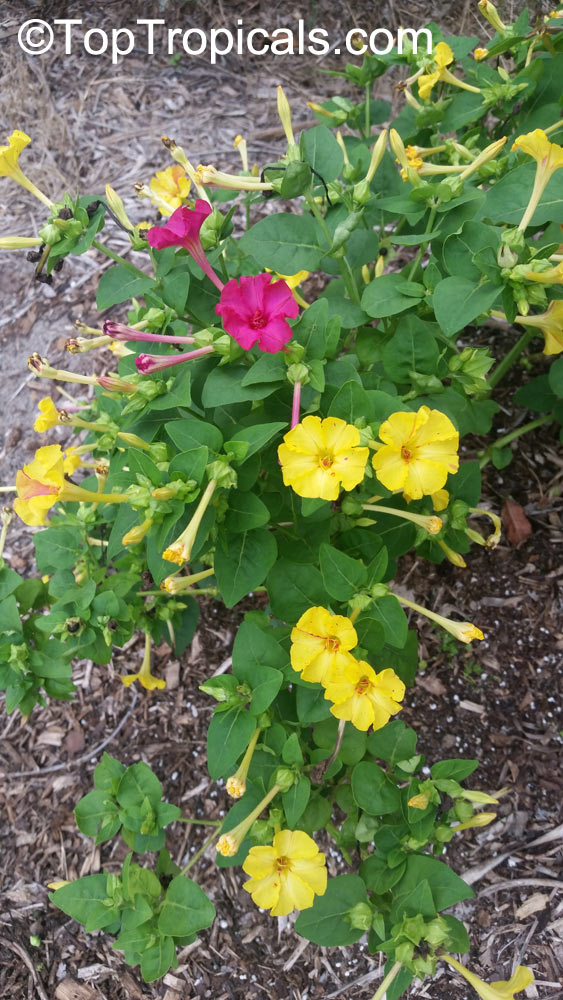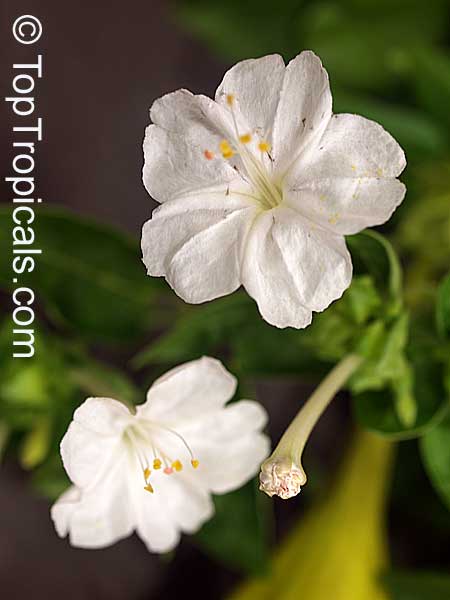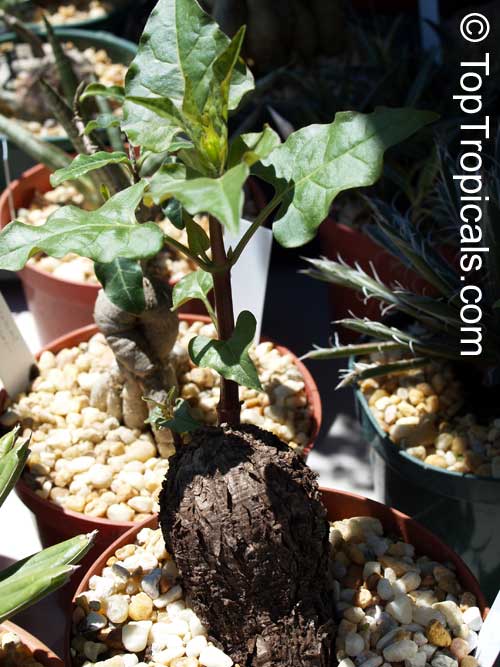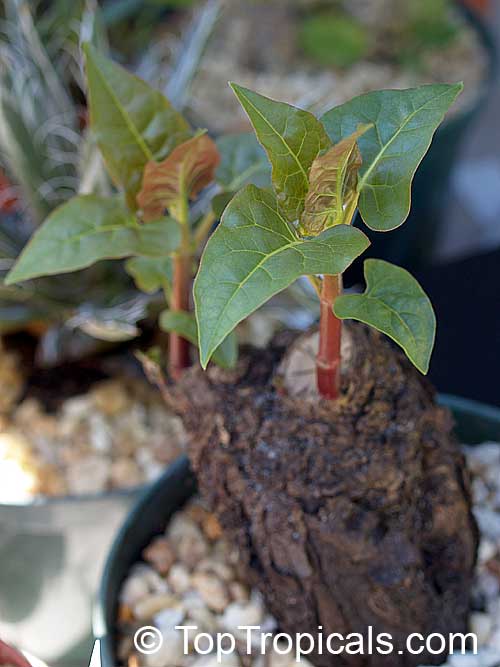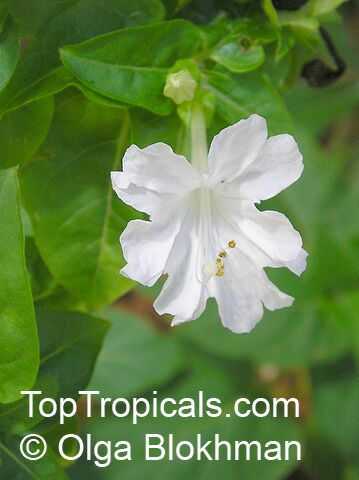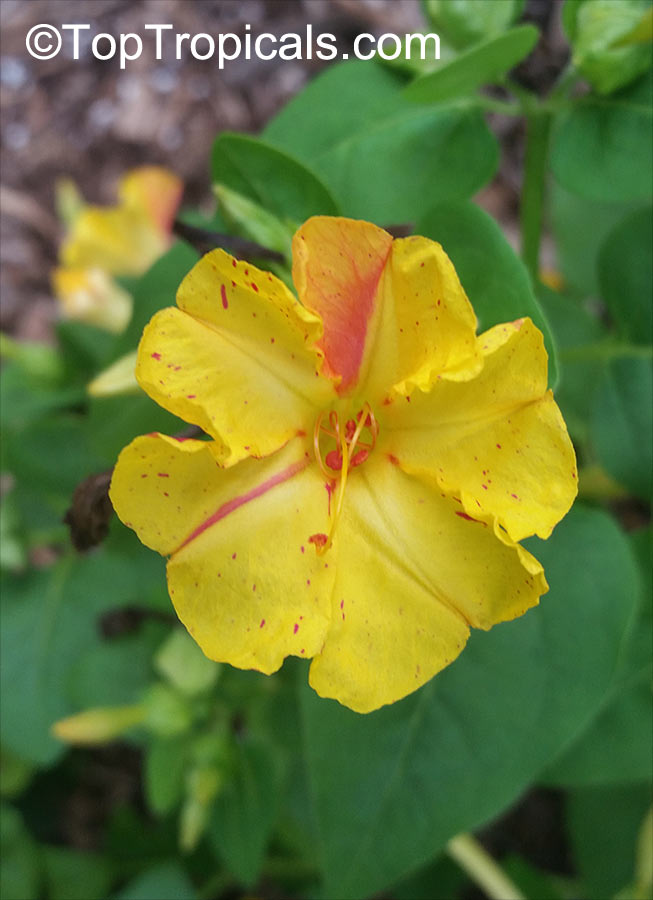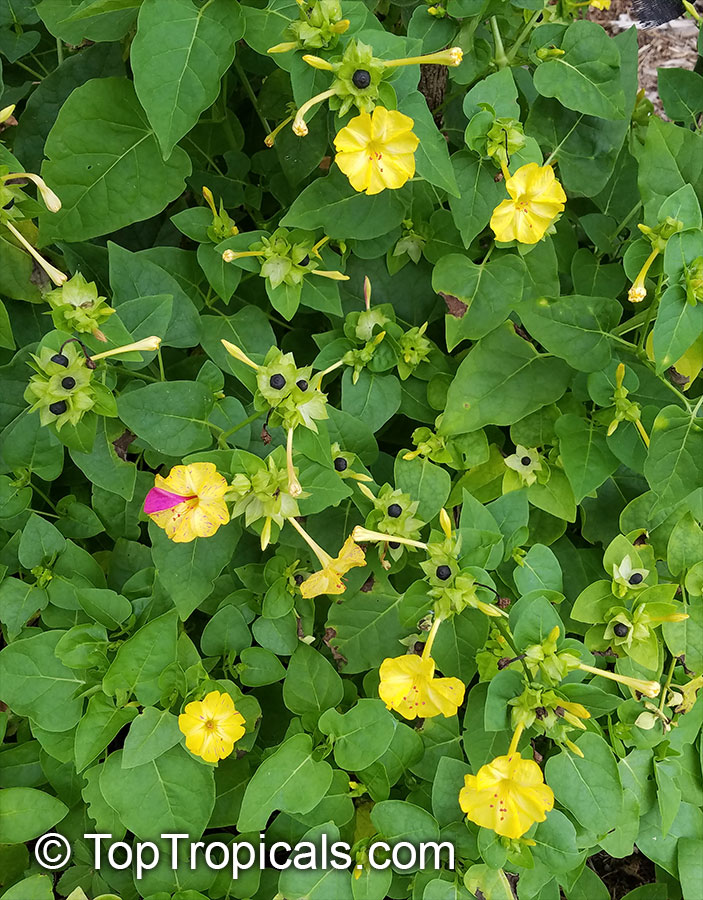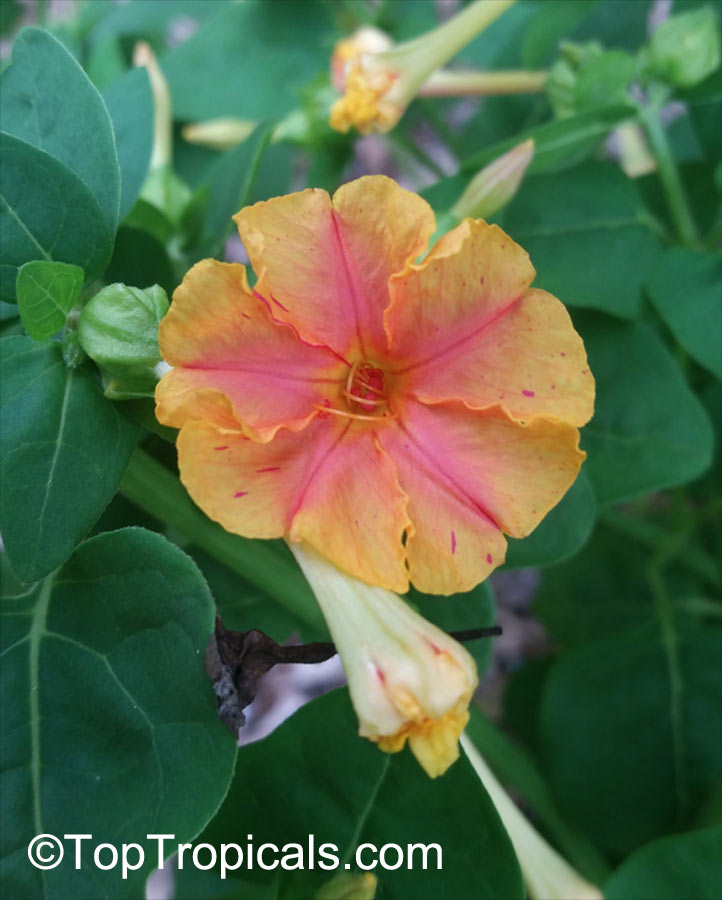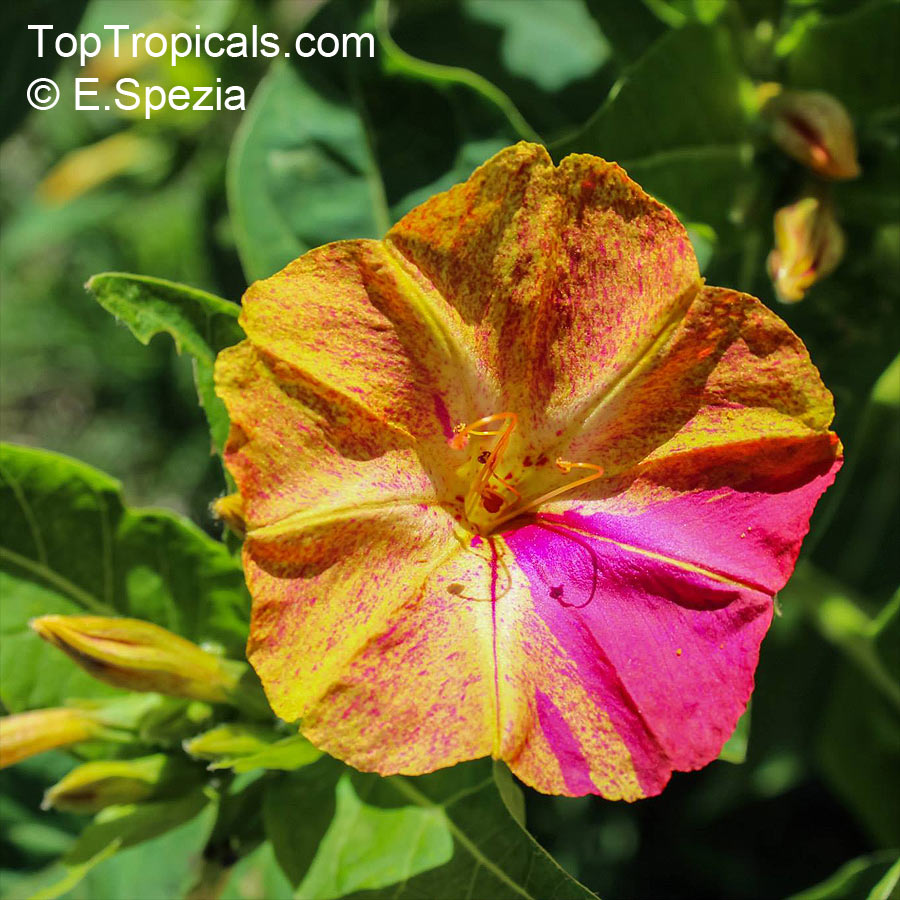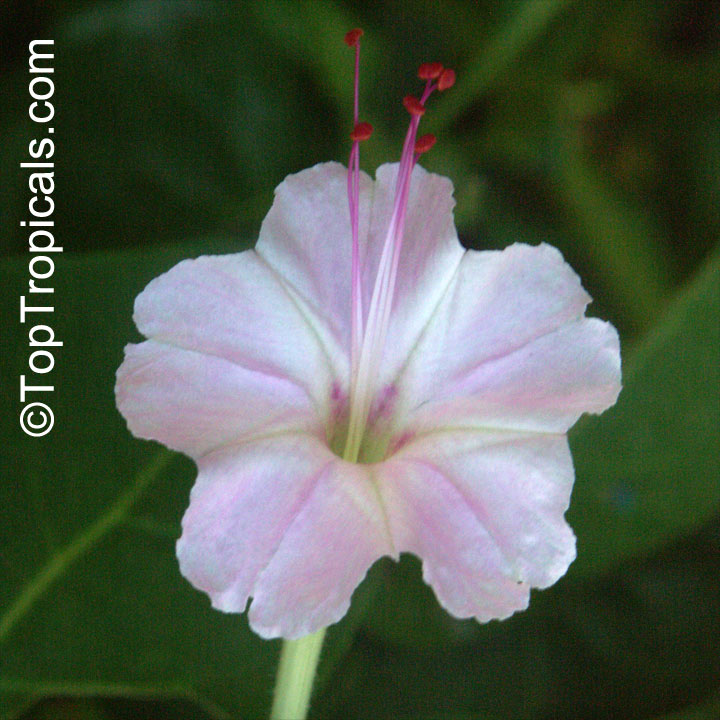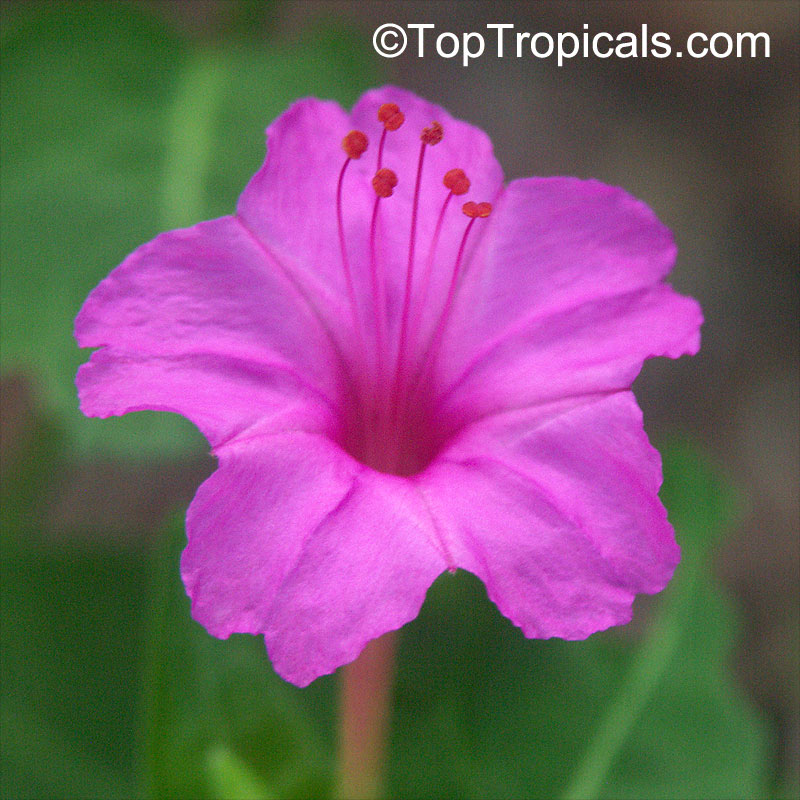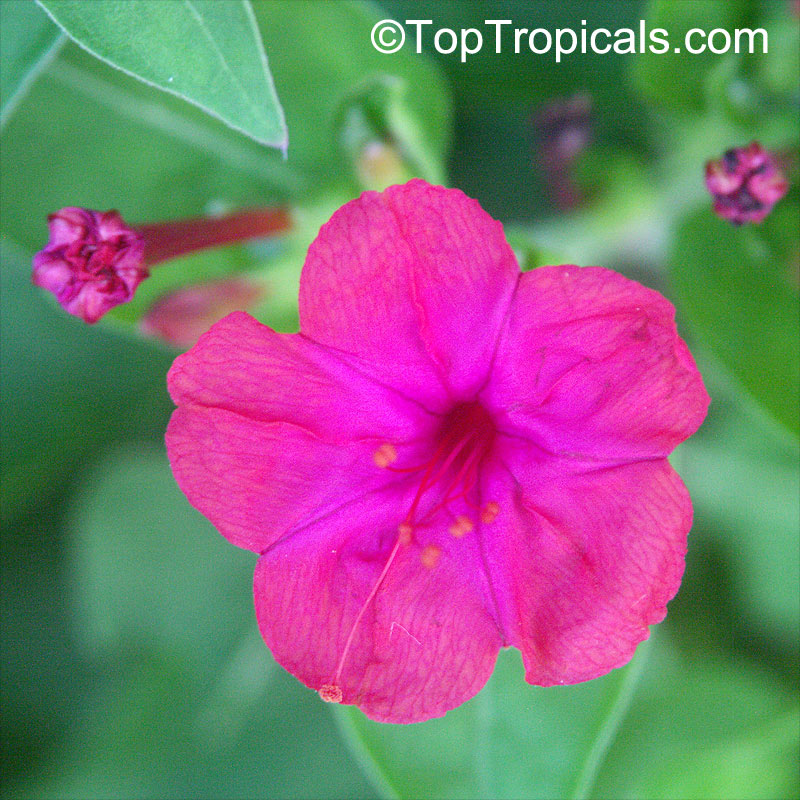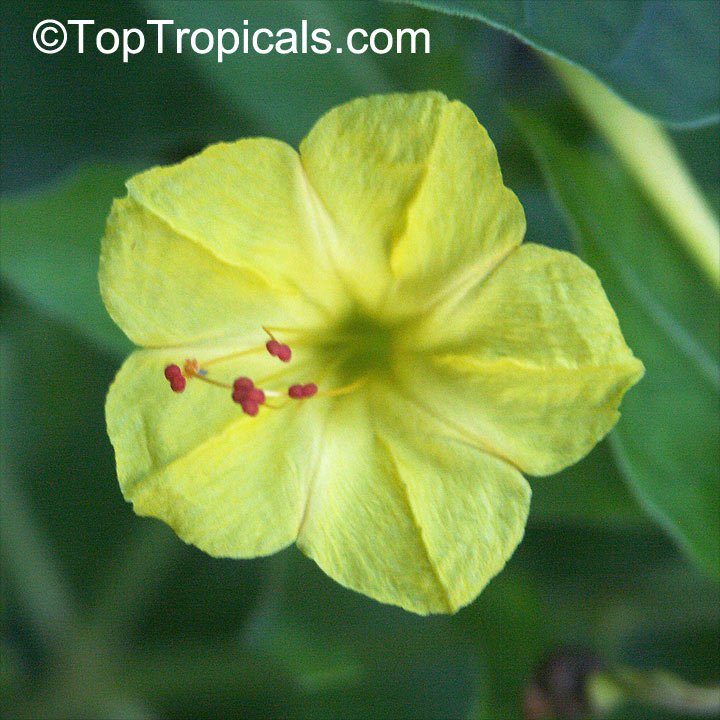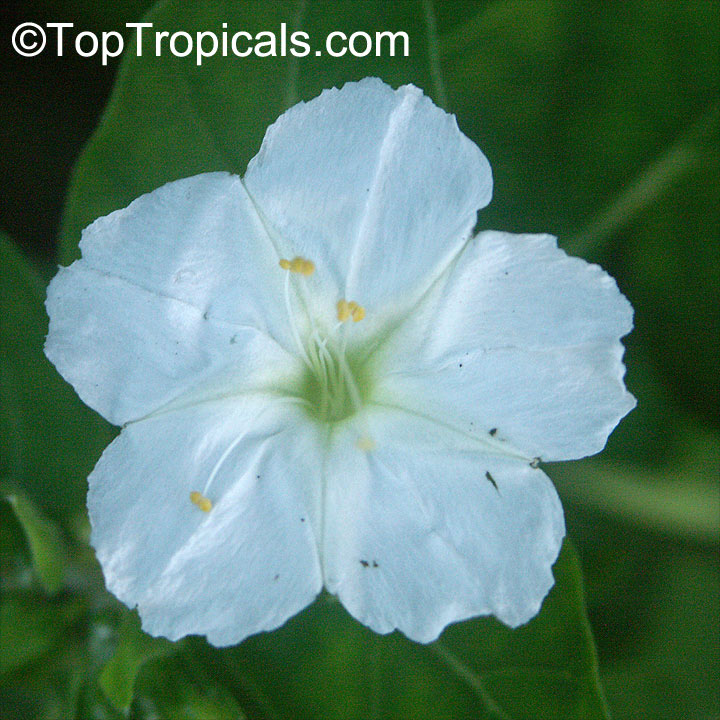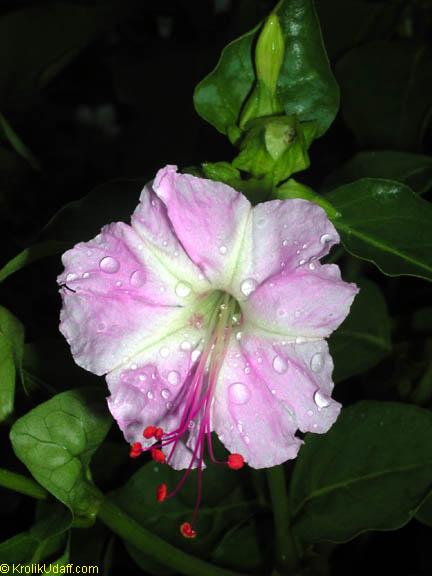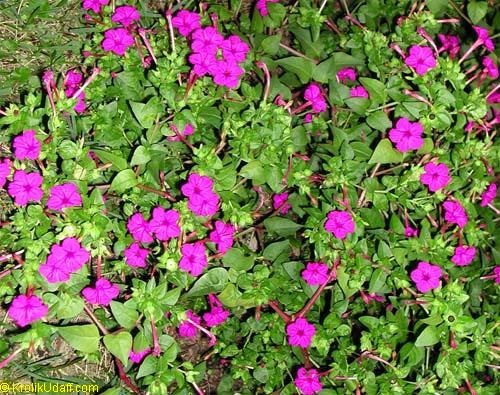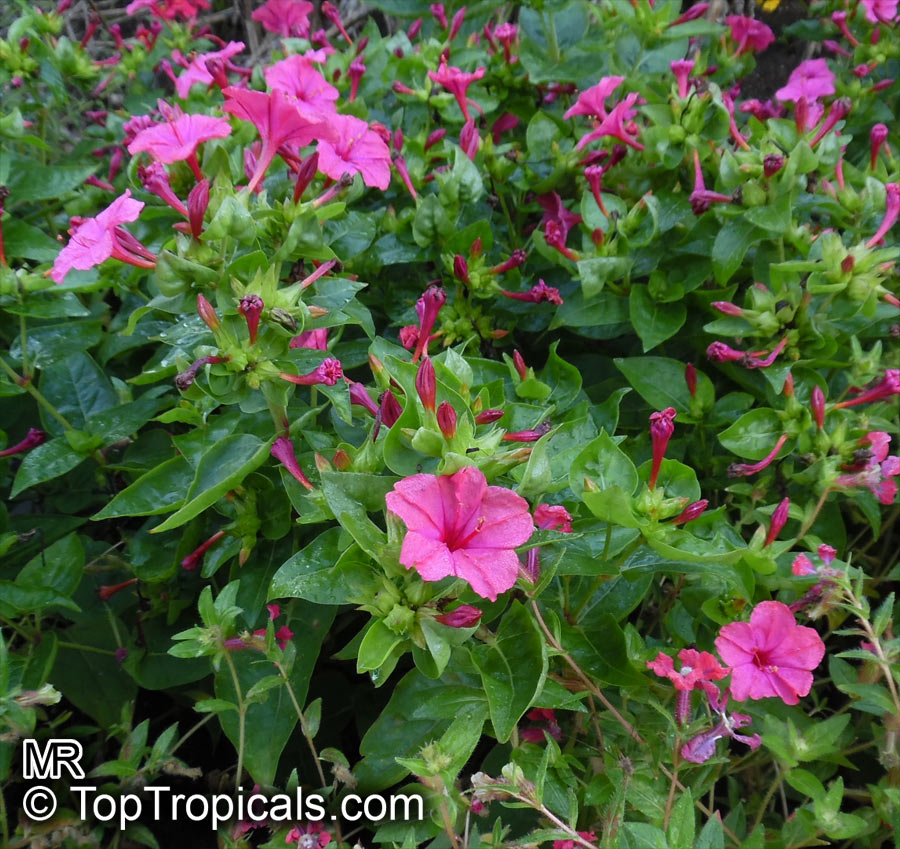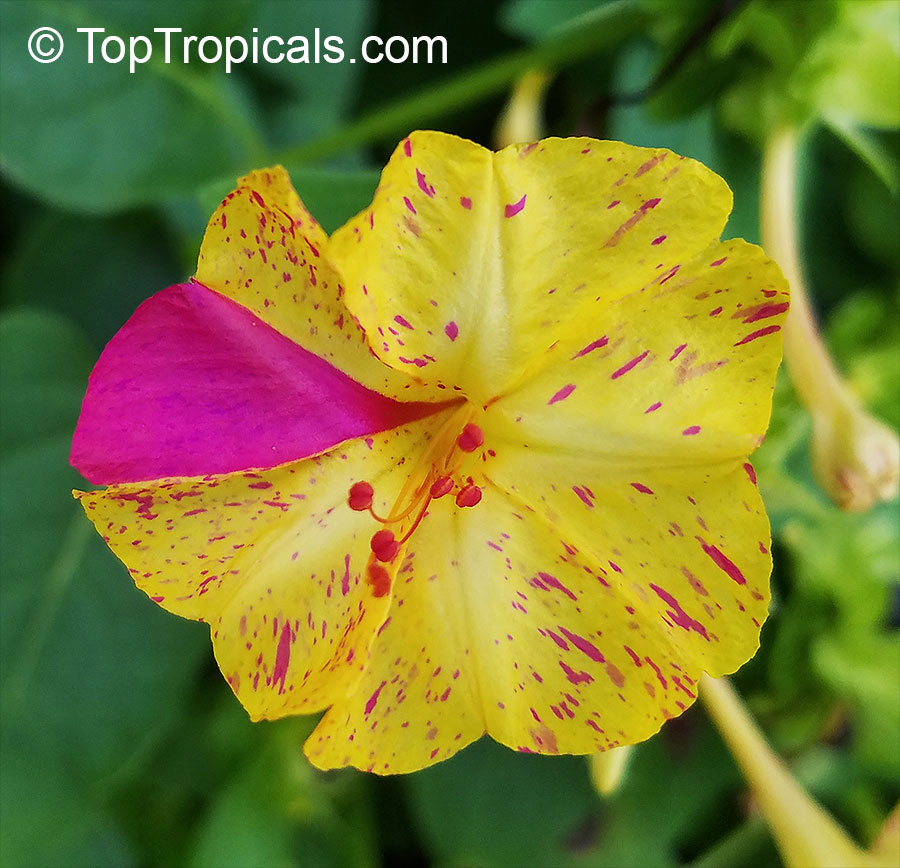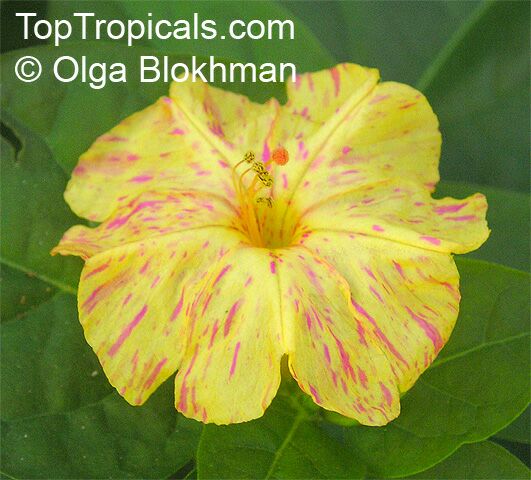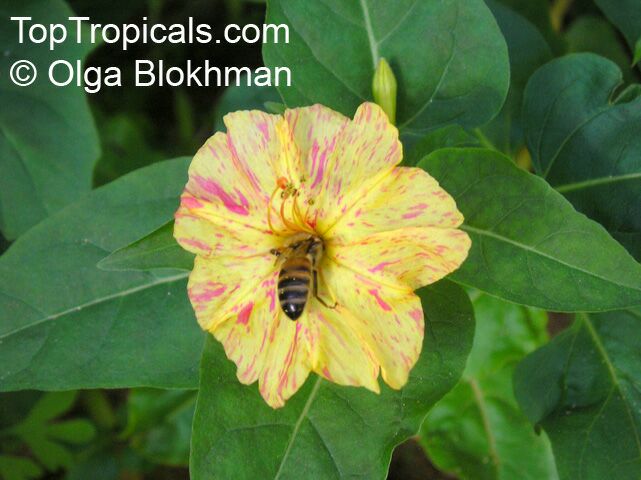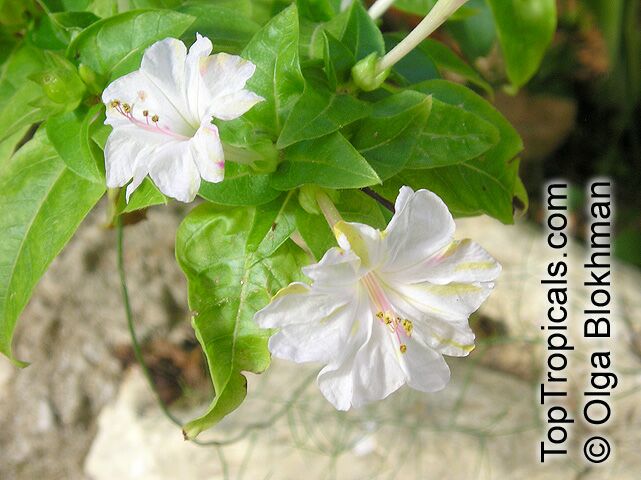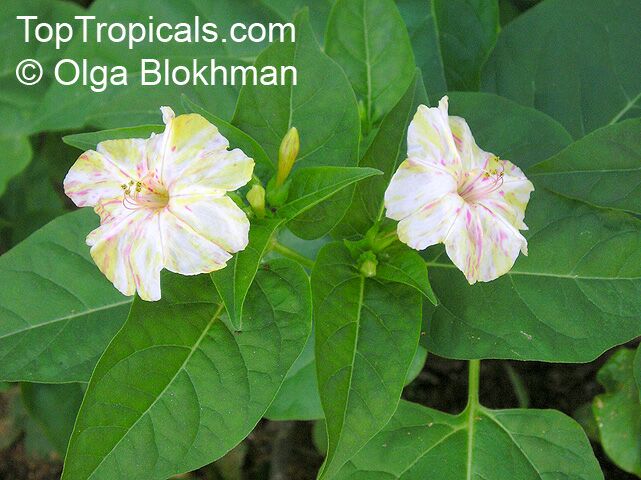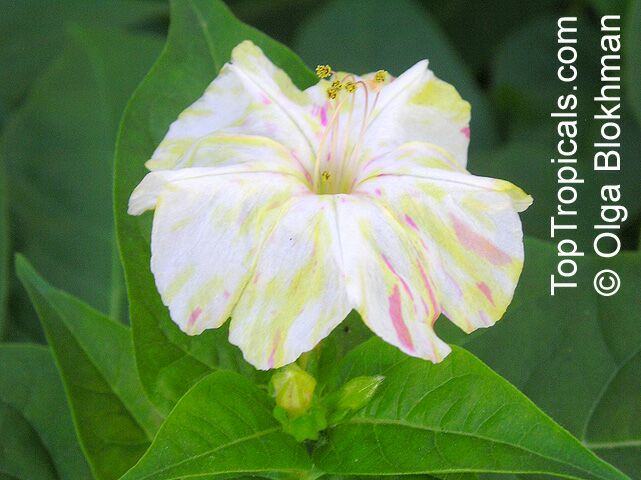Mirabilis jalapa (Four o'clock plant)
Top Tropicals Plant Encyclopedia
Botanical names: Mirabilis jalapa, Mirabilis lindheimeri, Mirabilis dichotoma, Mirabilis odorata
Common names: Four o'clock plant, Clavillia, Jalap, Maravilla, Bonina
Family: Nyctaginaceae
Origin: Tropical America














Perennial herb that reaches a height of 2-3 ft from a tuberous root. It produces beautiful flowers that usually open around 4 o'clock in the afternoon - hence its common name, four o'clocks. It is a popular ornamental plant grown worldwide for the beauty of its flowers (which can be white, red, pink, purple, yellow or multicolored) and their sweet fragrance. It was officially botanically recorded in 1753 although it already had long been distributed as an ornamental plant throughout the tropics of the world. In Brazil the plant is known as clavillia, maravilha, or bonina; in Peru it is known as jalapa or maravilla. The plant is used medicinally as well. Indigenous Peruvian people use a root decoction as a diuretic; the Shipibo-Conibo Indians put the flowers in baths to treat colds and flu. In Brazil, the Kayapo Indians inhale the powdered, dried flowers as a snuff for headaches, and use a root decoction to wash wounds and to treat such skin afflictions as leprosy. The Assuraní Indians in Brazil crush the seeds to use as a peppery condiment on foods, and grate the tuberous root into cold water and drink it for intestinal parasites. The tribal people of Orissa, India grind the roots of the plant into a paste with black pepper and take it orally for conjunctivitis. They also apply the juice of the leaves to fungal infections of the skin. Poisonous parts: Roots and seeds. Propagation by seeds is easy.
